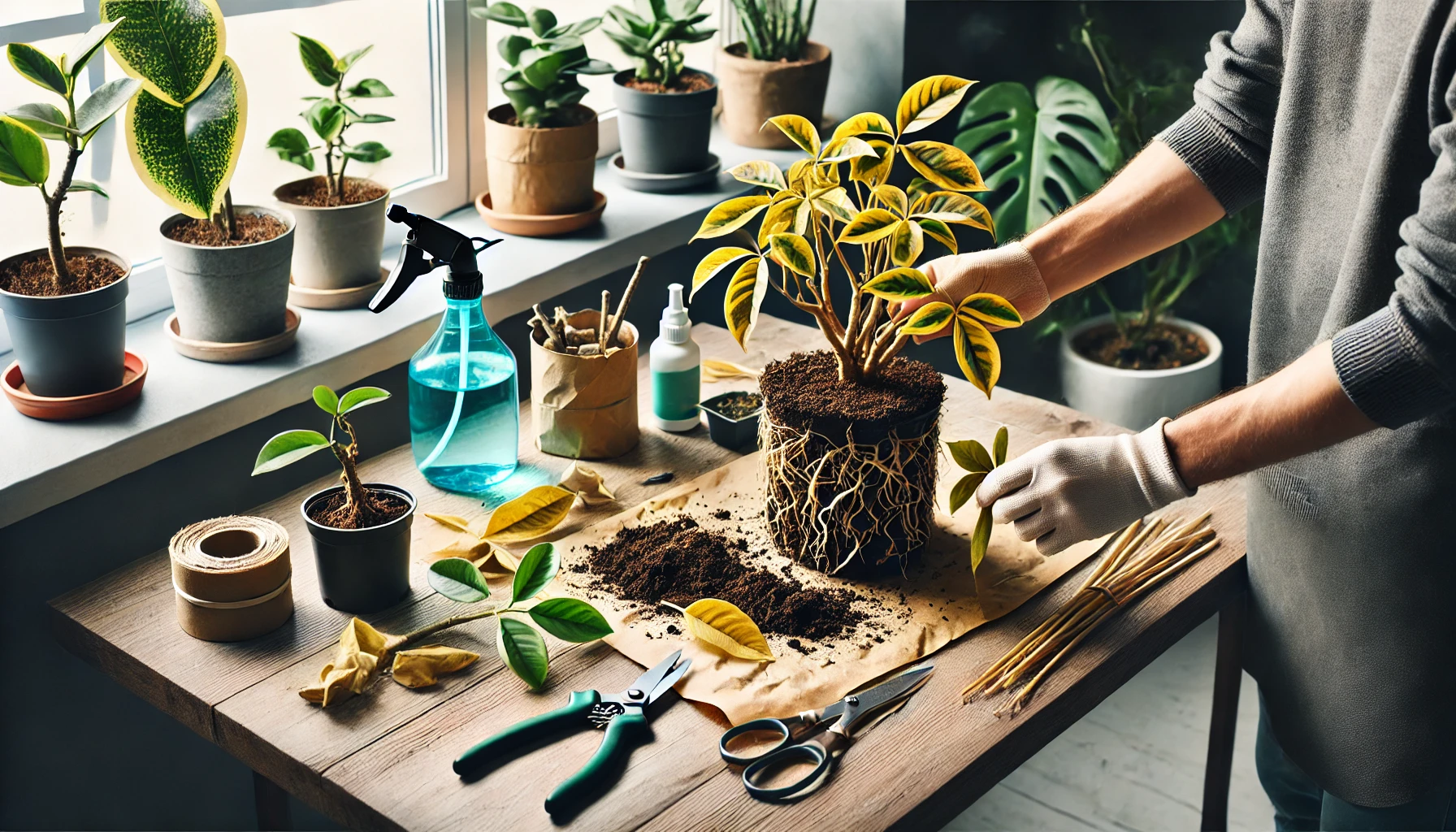Seeing a beloved plant struggle can be disheartening, but in many cases, it’s possible to nurse it back to health with the right approach. Whether the issue is overwatering, lack of light, or pests, this guide will help you identify the problem and take steps to bring your plant back to life.
Step 1: Assess the Plant’s Condition
Before you can save your plant, it’s essential to identify what’s causing the problem. Examine the following:
- Leaves: Look for yellowing, browning, or curling.
- Soil: Check for sogginess, dryness, or a strange odor (indicating rot).
- Roots: Healthy roots are white or light tan. Dark, mushy roots may indicate root rot.
- Stems: Check for firmness—soft stems may suggest overwatering.
Step 2: Identify the Cause
Overwatering
Symptoms: Yellow leaves, mushy stems, and a foul-smelling, waterlogged soil.
Solution:
- Remove the plant from its pot and inspect the roots. Trim any rotten roots with sterilized scissors.
- Repot the plant in fresh, well-draining soil and a pot with drainage holes.
- Water only when the topsoil feels dry.
Underwatering
Symptoms: Dry, crispy leaves, drooping stems, and cracked soil.
Solution:
- Soak the soil thoroughly, ensuring water drains from the bottom.
- Establish a consistent watering schedule based on the plant’s needs.
Lack of Light
Symptoms: Leggy growth, pale leaves, or slow growth.
Solution:
- Move the plant to a brighter location with indirect sunlight.
- For low-light plants, ensure they’re not in complete darkness.
Nutrient Deficiency
Symptoms: Yellowing leaves, weak growth, or discoloration.
Solution:
- Fertilize with a balanced liquid fertilizer during the growing season.
- Avoid over-fertilizing, as this can harm the plant.
Pest Infestation
Symptoms: Tiny bugs, webbing, or sticky residue on leaves.
Solution:
- Rinse the plant with water to remove pests.
- Treat with insecticidal soap or neem oil.
Step 3: Trim and Clean the Plant
- Remove any dead or damaged leaves and stems. This allows the plant to focus its energy on healthy growth.
- Clean the leaves gently with a damp cloth to remove dust and improve photosynthesis.
Step 4: Adjust Environmental Conditions
Ensure your plant’s environment supports its recovery:
- Humidity: Increase humidity for tropical plants by misting or using a humidifier.
- Temperature: Keep the plant in a stable environment away from drafts, heaters, or air conditioners.
- Light: Adjust lighting based on the plant’s preferences, avoiding sudden changes.
Step 5: Be Patient
Plants take time to recover. Avoid making multiple changes at once, as this can cause further stress. Monitor your plant’s progress weekly and adjust care as needed.
Common Recovery Mistakes to Avoid
- Overcompensating: Adding too much water, fertilizer, or light can worsen the problem.
- Neglecting Observation: Failing to monitor the plant’s response can delay recovery.
- Ignoring the Root Cause: Treating symptoms without addressing the underlying issue won’t help long-term.
Signs Your Plant Is Recovering
- New leaves or buds begin to emerge.
- The plant’s overall color improves, appearing more vibrant.
- Growth becomes more consistent, and drooping diminishes.
Conclusion
Reviving a dying plant requires patience, observation, and a tailored approach to its specific needs. By addressing the root cause and providing a nurturing environment, you can give your plant a second chance at life. With consistent care, even struggling plants can bounce back and thrive once again.
